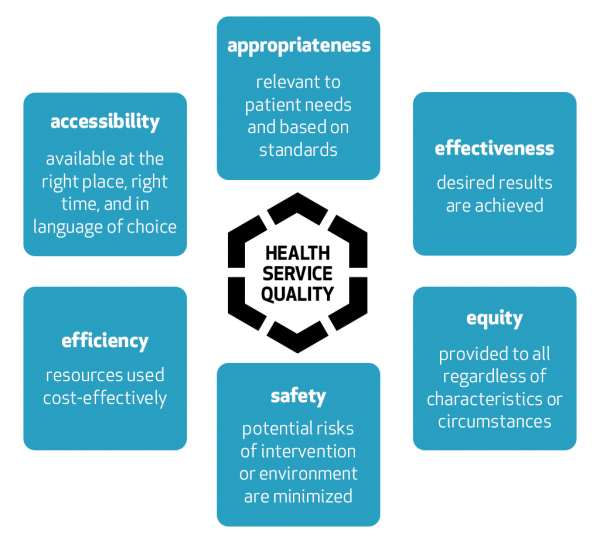What do you think of when you hear the word “quality?” How well something is made or something is done? The value you get for the money it costs? Or the confidence that you will have a good experience instead of a bad one?
When measuring the quality of health services in New Brunswick, the NBHC wants to make the most complete measurement possible. In the NBHC Act, quality was defined as having six dimensions:
- Accessibility: The ability of patients/clients to obtain care/service at the right place and the right time, based on respective needs, in the official language of their choice.
- Appropriateness: Care/service provided is relevant to the patients’/clients’ needs and based on established standards.
- Effectiveness: Care/service, intervention or action achieves the desired results.
- Efficiency: Achieving the desired results with the most cost-effective use of resources.
- Equity: The ability to provide quality care/service to all, regardless of individual characteristics and circumstances.
- Safety: Potential risks of an intervention or the environment are avoided or minimized.
By reporting on all six dimensions of quality, the NBHC can capture efficiency without ignoring safety, or highlight effectiveness without neglecting accessibility. With this inclusive view of quality, New Brunswickers can feel confident that NBHC reporting on health services gives them a clear and accurate picture of how the health system is working.
When quality indicators are combined with specific targets to be achieved, performance management becomes possible in the New Brunswick health system. Performance management opens the door to deliberate improvement and better service for citizens. Unfortunately, most health service quality indicators don’t have targets. Citizens can influence this by letting the health system know they expect quality health services and demand health system improvement through performance management.

